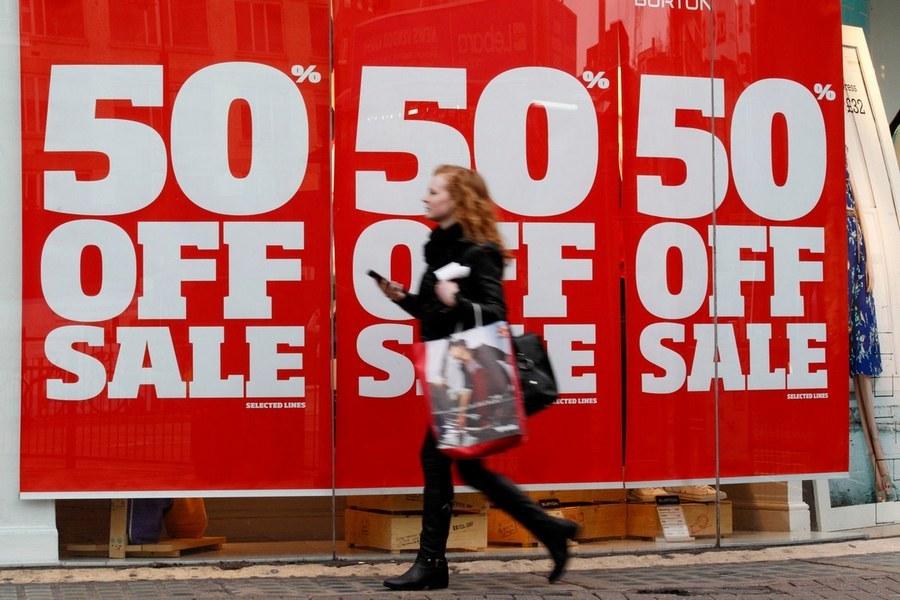

What Retailers Don’t Want You To Know About Sale Prices
According to new research by Harvard professor David Ngwe, some retailers use “fictitious pricing,” a practice where retailers list an original price on a product that does not truthfully reflect prior selling prices, to boost sales.
Ngwe first discovered the fictitious prices when he was investigating a different question using data from a major U.S. manufacturer/retailer. According to Ngwe, “Many of the [retailer’s] products, particularly in its outlet stores, had ‘original prices’ that were never selling prices.”
In his work, Ngwe studied a fashion goods retailer and sought to identify the effect of false original prices on consumer behaviors. The motivation to make discounts look larger than they really are – to create a perception of value – is not a new or unique phenomenon. It just usually goes unnoticed. In fact, some products studied by Ngwe were never even intended to be sold at the original price.
The FTC guidelines against deceptive pricing specifically state the following:
If the former price being advertised is not bona fide but fictitious — for example, where an artificial, inflated price was established for the purpose of enabling the subsequent offer of a large reduction — the “bargain” being advertised is a false one; the purchaser is not receiving the unusual value he expects.
There have been several lawsuits to crack down on the practice of deceptive pricing, but according to Ngwe, it’s hard for states and the FTC to crack down on it to due the “arbitrariness with which a genuine discount might be differentiated from a deceptive one.” In a 2013 lawsuit filed in California, a customer alleged that he would not have made several purchases at a retailer if he had known the prices did not represent actual markdowns.
Do fake original prices actually impact shopping behavior? In his research, Ngwe highlights that “List prices have a strong influence on purchase outcomes, with a $1 increase in the list price having the same positive effect on purchase likelihood as a $0.77 decrease in the actual selling price, on average.” Ngwe adds, “These results imply that fake prices enhance demand by misleading consumers about true original prices.”
In other words, consumers view products with higher original prices as more desirable. Which means that you might subconsciously make purchasing decisions based on false information. The feeling of saving more money or getting an awesome deal can be persuasive. Think about a time when you were in a store or browsing online and were surprised to see a steep discount. It can be hard to say no to an enticing deal that may only be offered for a limited time.

With the busy shopping season ahead, here are a few things you can do to avoid falling victim to fictitious pricing:
1. Don’t trust the listed original prices. Research products prior to purchasing to understand their true original price. If a product appears to be discounted by 30%, don’t necessarily take it at face value. Before swiping your card make sure you understand what you are buying and what it has actually sold for. You can also check product tags for UPC codes or product IDs to verify that you are getting the product you intended to purchase. According to Ngwe, “Some online research—looking at reviews, comparison shopping—can be helpful.”
2. Before you make a purchase, ask yourself what you think a product is worth. Try to guess what the product seems to be worth before even looking at the price. By making your own assessment of what a product is worth to you, you’ll rely less on the perceived value derived from the listed original price. Another strategy is to create a holiday wish list or shopping list. By doing this, you’ll be less likely to be swayed by promotional or temporary pricing schemes intended to tempt you to purchase.
3. When shopping online, make sure you review the retailers’ shipping and return policies. Make sure that the quality of the product is exactly what you were expecting. If the sweater doesn’t seem like it was originally worth $150, then there’s a chance that it wasn’t.
4. Be sure to read the fine print on ads. Especially around sales like Black Friday, the fine print often includes date ranges, excluded items, whether the offer is only good in-store or online, purchase limits, and warranty limits. The last thing you want is to make a purchase and find you overpaid.
But ultimately, nothing will prepare you for the holidays like preparing your budget and setting money aside now. Here’s my guide to building an amazing budget. Waiting until the last minute to shop basically ensures that you won’t have enough time to make informed decisions, and you will likely be swayed by deals that might be too good to be true.
About author:
Camilo Maldonado is Co-Founder of The Finance Twins, a personal finance site showing you how to budget, manage your money and refinance your student loans. He also runs Contacts Compare.
From : Forbes
Read more –
Read also


McDonald’s відкрив 10-й ресторан у 2025 році — у селі Гатне біля Києва (+фото)





